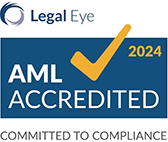If you are thinking of adding a conservatory or extension to your property, you need to be aware of the rules and regulations.
Some additions to a property do not require planning permission, but it is important not to breach planning laws. If you do, you could be required to take down the conservatory or extension. You could also find it difficult to sell your home, as your buyer’s solicitor will ask to see planning consent and building regulations approval for new additions to a property.
Adding a conservatory
If you wish to add a conservatory to your home without seeking planning consent, it cannot be bigger than 50% of the area around your home, to include any outbuildings or sheds.
You can extend the conservatory outwards into the garden from the rear wall of your property by up to 8 metres in respect of a detached house and 6 metres for a semi-detached house.
Where the conservatory will be more than 4 metres, you need to notify your local authority who will advise your neighbours of your proposals under the neighbour consultation scheme.
The height of the conservatory should not exceed 4 metres. If it is within 2 metres of the boundary cannot be higher than 3 metres.
Where you wish to build a conservatory to the side of your property, it should not be wider than 50% of the size of your home.
Where the conservatory will be bigger than 30 square metres, you will need to obtain building regulations approval. Otherwise, provided the conservatory is at ground level, is separated from the house by an external wall or window, has a separate heating system and complies with glazing and electrical installation regulations, building regulations approval will not be required.
If the conservatory will be open plan, then you must obtain building regulations approval, which will include complying with energy efficiency rules.
You may need to fit ventilators, window openers or a mechanical extractor system if your conservatory will be more than 30 square metres.
Adding an extension
You are permitted to extend your home under the permitted development rules where:
- No more than 50% of the land around your home will be covered
- Extensions higher than a single storey will not extend beyond the original rear wall of the property by more than 3 metres or be within 7 metres of the boundary opposite the rear wall
- A single storey extension will not extend beyond the rear wall by more than 8 metres for a detached house and 6 metres for an attached house
- The extension will not be forward of the building line at the front of the house
- The extension will not be higher than the original house and roof
- The maximum height for a single storey rear extension is 4 metres
- The maximum height within 3 metres of the boundary is 2 metres
- The height for a single storey extension is no more than 4 metres
- A side extension is no wider than half of the original property
- Any new roof matches the existing roof
- No verandas, balconies or raised platforms have been added
The Party Wall Act 1996
You should also bear in mind that if you will be carrying out work on a party wall (a wall between your home and your neighbour’s) or excavating foundations close to a party wall, you must abide by the Party Wall Act 1996.
This includes notifying your neighbours by providing them with a Party Wall Notice and drawing up a Party Wall Agreement.
If you will be working within 3-6 metres of a party wall, you are advised to ask an expert to draw up a Party Wall Notice and Agreement for you. Notice will need to be served between two months and a year of work starting.
Contact us
If you would like to speak to one of our expert property lawyers, ring us on 0333 305 5189 or email us at info@lpropertylawyers.co.uk


